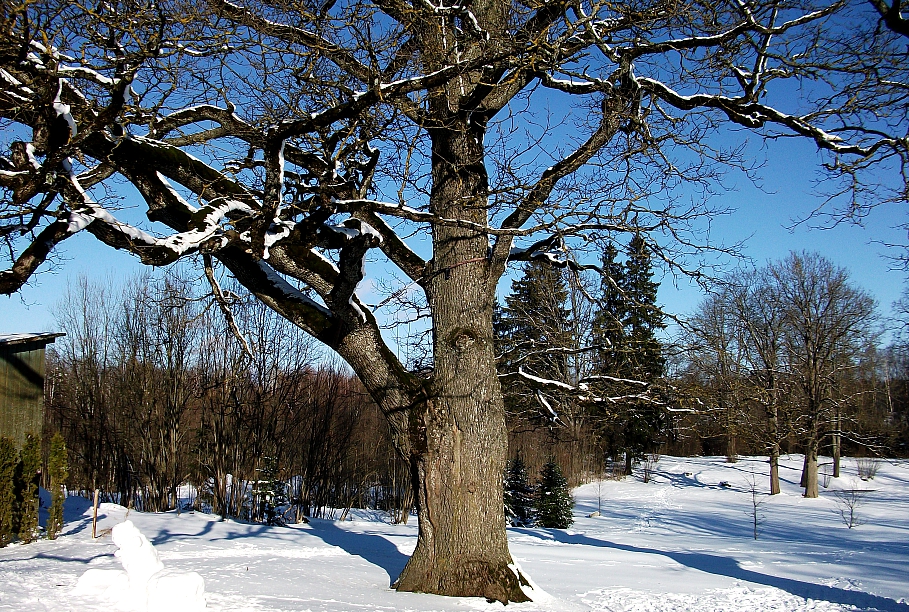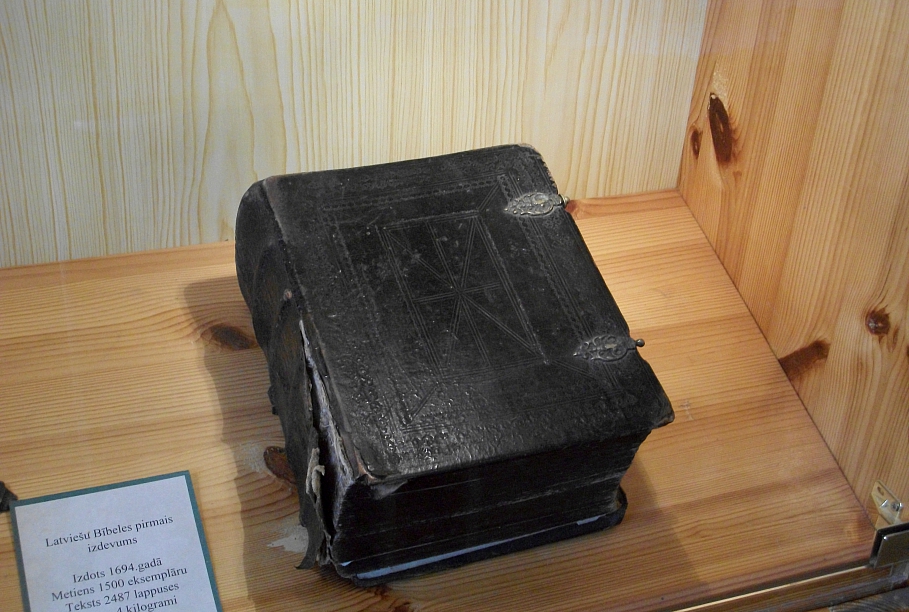It took Ernst Glück eight years to translate the Holy Scripture into Latvian. Having finished translating the New Testament, the German pastor planted an oak in his manor yard at the town of Marienburg (now Alūksne). He planted the other one after translating the Old Testament.
Glück (1652-1705) was born in Wettin, near Halle. After studying theology in Wittenburg, the city of Luther, he arrived in Vidzeme at the age of twenty one. In 1683 he became a pastor in Marienburg, located 200 km northeast from Rīga, and dedicated himself to translating the Bible.
Due to the social and cultural domination of the German gentry, national literatures were slow to develop in the Baltics. The Reformation provided significant impetus to their development, as did Glück’s Bible. 150 years after Luther’s Bible was published, Glück’s translation was one of the first-ever texts to be printed in the Latvian language. Establishing the first Latvian schools for the children of local peasants, the Saxony-born preacher likewise contributed significantly to the development of education.

The time in Marienburg for Glück’s household of eight people came to an abrupt halt during the Great Northern War. After the Russian army invaded in 1702, the family was taken captive and transported to Moscow. They were accompanied by her maid, who would go on to become Catherine I, the Empress of Russia.
Glück’s two oaks are still standing strong at the park of the former manor. Meanwhile, in 1990 the Bible Museum was opened at the town center. The small museum has a collection of some 900 exhibits. Among the Bibles and books of songs and prayers in numerous languages, visitors can of course also see the first edition of Glück’s Bible.
The German Traces series was first published as part of the Goethe Institut in Rīga project “German Footprints in Latvia” ("Vācu pēdas Latvijā" www.goethe.de/vacu-pedas). The linked mobile application "German Footprints in Latvia" can be downloaded at www.ej.uz/vp-iOS and www.ej.uz/vp-Android.



























